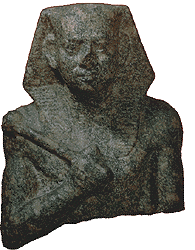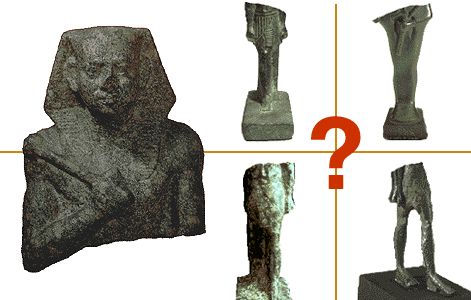 |
| Stop! Read this first. |
 |
This fragment of a statue
was purchased by the Memorial Art Gallery in the 1940s. The piece was
called "Royal Portrait Bust." Look closely at the artwork . . . Why
do you think it was identified as a "royal" portrait?
When artworks are in museum collections, experts in art history, archaeology, and other fields continue to study them. Over time we sometimes learn more about a piece - maybe it was made at a different time than we originally thought, or maybe it turns out to be a fake! Our understanding and interpretation of museum objects is always changing. |
|
Next! Your instructions. Four possible matches are illustrated below. Which one would you choose? Remember to look for similar pose, break lines, and carving style. When you have made a selection, click on that image. Now! Do it. |
 |
|
Wait! One final thought. Get the real story on the Egyptologist who made this discovery! |
 |
 |
 |
 |
 |
 |
© Michael C. Carlos Museum of Emory University,
Memorial Art Gallery of the University of Rochester and Dallas Museum of Art
For more information please contact odyssey@emory.edu.
Last Update: